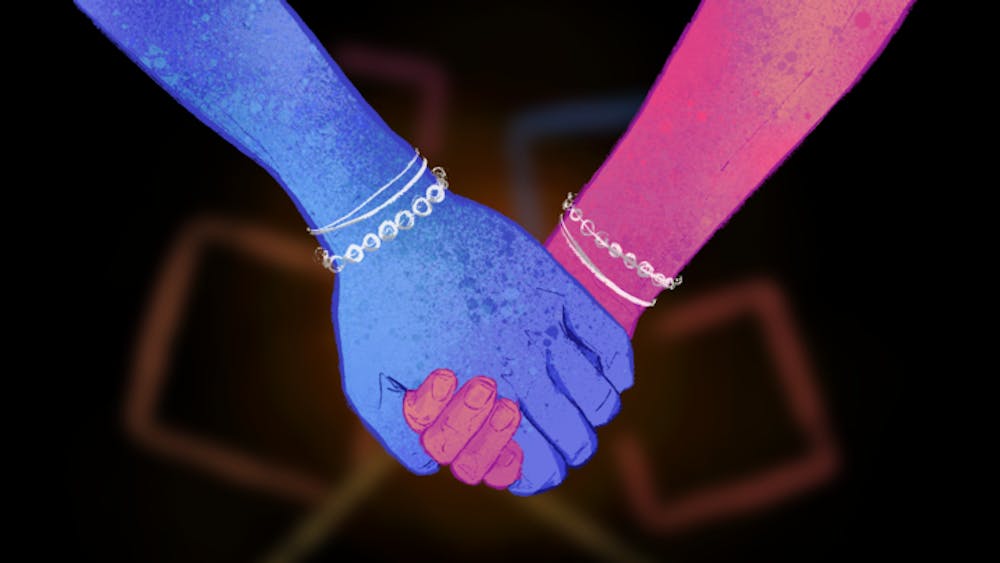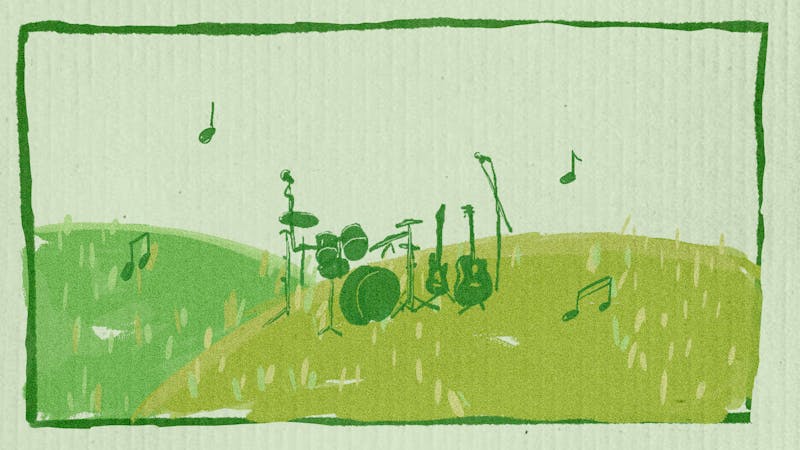Between Jan. 7 and 31 of this year, two major fires roared through Los Angeles County, leaving behind the shells of cars and empty foundations of houses. On the western side of LA, the Palisades fire destroyed more than 20,000 acres of the Pacific Palisades; in the east, the Eaton Fire consumed 14,000 acres of Altadena, Calif. and nearby neighborhoods. By the time they were contained, 29 people had died, 200,000 were forced to evacuate, and the fires would become the second and third most destructive in California history.
“It's almost like it was closing in from both corners of LA,” Rustin Kharrazi (C ‘28), a freshman from Los Angeles, says. “I just remember hearing that everyone I know in the Palisades evacuated … It was really just so much going on at once.”
Footage of fires just outside homes, nearing driveways and yards circulated on social media as residents filmed while evacuating. Walls of flame appeared suddenly in windows, spreading through neighborhoods in a matter of minutes. Perhaps the most harrowing are the photos taken of residents returning to the husks of their homes to sift through for any and all remaining signs of the lives they lived there. “Climate change will manifest as a series of disasters viewed through phones with footage that gets closer and closer to where you live until you’re the one filming it,” reads a tweet widely reposted alongside these images.
The effects of increasing global temperatures have made fires increasingly common and increasingly destructive. In the last decade, more than seven million acres of land have been burned in California, and of the 20 most severe wildfires in the state’s history, eight have happened since 2017. Long–term droughts, which have become almost familiar, create conditions where a spark around dry brush can lead to acres of forest—and now neighborhoods—burned down.
“What we’re seeing play out is a tragedy, and it’s a preventable tragedy. It’s a result of the fact that we have continued to burn fossil fuels and elevate levels of carbon pollution in the atmosphere to the point where we now have a fire season that stretches well into the winter, into the new year and has expanded to the point where it’s overlapping with the Santa Ana wind season,” explains Michael Mann, Penn’s vice provost for climate science, policy and action, to CNN. “All of that is tied to the large–scale warming of the planet from the burning of fossil fuels.”
There are thousands of fires in California every year, but until recently, they have mostly skirted around the boundaries of denser, more residential areas. “Fires are not uncommon at all. There've been times where school is canceled. The same way the East Coast has snow days, we've had fire days where you wouldn't go to school because it's really smoky,” explains Rustin. “It was always kind of known that the Palisades is vulnerable to that. But, of course, no one knew the scale [of] what would happen.”
Much of the aftermath is bleak: Thousands, who had to leave their homes in minutes, lost everything. Those with the means are now renting in one of the most competitive housing markets in the country, but many are forced to live in cars or in the streets.
“My best friend from high school lives on Fair Oaks in Altadena. And, I mean, that entire neighborhood was destroyed. I just remember him sending me a picture of his house, or the leftovers of his house, and it was brutal to see because, I mean, I was just at his house, like a week or two before the fires,” says Steven Li (W ‘27), a former Street staffer.
“What do you say to someone whose house just burned down, and they lost everything?” asks Rustin. “Some of my friends did not even have time to evacuate, or expected to come home. And so, for example, my best friend Nicole, has two pairs of pants. The day after the fire, everything else was lost.”
The singularity of both neighborhoods and the communities housed within them, compounded the damage. It wasn’t just a loss of physical space but of countless communal histories, personal memories, and neighborly relationships.
“Altadena is this very historic community. It's a community with a lot of culture, with different diners, with random museums, with a lot of nature. And I mean, it's terrible to see, so close by, a whole community just wiped out,” says Steven.
“The Palisades is such a unique place in LA … It was such a niche part of LA that doesn't exist anywhere else. The way I kind of describe it is, it's almost like liberal Beverly Hills, if that makes sense. But really a small town feel that doesn't exist anywhere else,” says Rustin. “It's also important to know that it's not just [people’s] house[s]. It is their elementary schools, their middle schools, their high schools, their camps that they go to, their dance studios … Like, it is literally their entire childhood.”
At the Kelly Writers House, Jamie–Lee Josselyn, associate director for recruitment in the Creative Writing Program, honed in on the loss of possessions with personal meaning. She works with high schools across the country with creative writing programs, and the California School of the Arts — San Gabriel Valley in Duarte, Calif. is one of them.
“When I was reading and seeing the news about the wildfires and realizing that fires were out east of LA near Altadena and Pasadena, this school was very quickly on my mind, and I saw on their social media that they had families that had been impacted,” she says. With GoFundMes and other community efforts, most of the urgent essentials were covered, but she had an idea for how the Writers House could help out. At a Hub meeting in February, students gathered to make pins and bracelets and sign cards to send to high school students at CSArts—SGV.
“One of the student groups at CSArts was posting about how one of the things people were missing was their personal items, that make them feel like themselves, because, you know, when you lose everything, you lose everything,” Jamie–Lee says. “So I thought maybe we could help with some of those things that wouldn’t be at the top of the list but might feel good to have and it might also just feel good to hear from another group of writers.”
We’re increasingly witnessing natural (but fossil–fuel driven) events like this, but also the ever–evolving ways people find to help each other out. Whether it was spreadsheets of GoFundMes, craft projects, or resource drives, neighbors as well as strangers across the country came together to see each other through the fires and aftermath.
However, there’s still much anxiety in California and across the country about what the next few years will bring when it comes to climate change. In the midst of these January fires, Donald Trump was inaugurated the 47th president of the United States, and he’s quickly began rolling back fossil fuel–limiting policies.
“He doesn't want to talk about climate change. The incoming administration is doing everything it can to dismantle climate action in the U.S., to dismantle programs to incentivize clean energy [and] climate solutions,” says Mann. “He’s trying to distract the public by talking about anything else, by talking about the governor, by talking about the current president, talking about land use practices … anything he can to distract the public so that they don’t see this for what it is and that’s our continued addiction to fossil fuels, an addiction that his administration hopes to maintain.”
In the meantime, Los Angeles rebuilds, replacing necessary infrastructure, innovating with fireproof homes, and updating evacuation plans. Even as things in the federal government seem grim, LA and its residents look towards the future, restoring the structures of their city and the communities they hold.






